Carinaria
Roger R. Seapy- Carinaria challengeri
- Carinaria cithara
- Carinaria cristata
- Carinaria galea
- Carinaria japonica
- Carinaria lamarcki
Introduction
The body is basically cylindrical and elongated, consisting of proboscis, trunk and tail regions. The stalked visceral nucleus and swimming fin are opposite each other on the posterior portion of the trunk. The visceral nucleus and gills are covered by a laterally compressed, cap-shaped shell. Tail size and shape are variable. A tail crest is present that varies in height, shape, and presence of pigmentation. The swimming fin is well developed and, in both sexes, has a small sucker on its postero-ventral margin.
Brief Diagnosis
Carinariid heteropods with:
- Body consists of a short proboscis, well-developed trunk, and a tail of varied size, shape and pigmentation
- Visceral nucleus stalked and covered by a laterally compressed, cap-shaped shell
- Visceral nucleus and swimming fin on posterior part of trunk
- Swimming fin with small sucker on ventro-lateral margin
Characteristics
- Body morphology
- Body elongate and cylindrical, divided into proboscis, trunk and tail regions
- Stalked visceral nucleus and swimming fin on posterior part of trunk
- Tail of variable shape and size, with a dorsal crest
- Pair of tentacles located ahead of the eyes, often of unequal size with the right one reduced or vestigial
- Body elongate and cylindrical, divided into proboscis, trunk and tail regions
- Shell
- Shell moderately compressed laterally and cap-shaped, with a flattened keel projecting from the anterior margin
- Shape of shell and height of keel variable among the species
- Swimming fin and sucker
- Swimming fin well developed
- Fin sucker located on postero-ventral margin of swimming fin
Comments
The genus Carinaria includes six species, which can be distinguished by the following characters:
| Species | Maximal body size | Shell shape | Shell height to basal length ratio | Shell Keel | Tail size and shape of tail crest | Tail "claspers" |
| C. challengeri | 40 mm | broadly triangular | 0.5 | low | tail small; crest very low | present |
| C. cithara | 50 mm | very tall and very narrowly triangular | 2.0 | low | tail large; crest low | absent |
| C. cristata | 640 mm | narrowly triangular | 0.8-1.0 | low | tail very large and elongated, whip-like and pigmented posteriorly; crest elevated and pigmented dorsally | absent |
| C. galea | 40 mm | triangular | 1.0-1.4 | tall | tail very small; crest low | absent |
| C. japonica | 105 mm | triangular | 0.8-1.0 | moderately elevated | tail moderately large; crest tall | absent |
| C. lamarcki | 220 mm | broadly triangular | 0.5 | low | tail moderately small; crest low | absent |
References
Okutani, T. 1961. Notes on the genus Carinaria (Heteropoda) from Japanese waters. Publ. Seto Mar. Biol. Lab. 9:333-352.
Richter, G. and R. R. Seapy. 1999. Heteropoda, pp. 621-647. In: D. Boltovskoy (ed.), South Atlantic Zooplankton. Leiden: Backhuys Publ.
Tesch, J. J. 1949. Heteropoda. Dana Rept. No. 34. 53 pp.
About This Page

California State University, Fullerton, California, USA
Correspondence regarding this page should be directed to Roger R. Seapy at
Page copyright © 2007
 Page: Tree of Life
Carinaria .
Authored by
Roger R. Seapy.
The TEXT of this page is licensed under the
Creative Commons Attribution License - Version 3.0. Note that images and other media
featured on this page are each governed by their own license, and they may or may not be available
for reuse. Click on an image or a media link to access the media data window, which provides the
relevant licensing information. For the general terms and conditions of ToL material reuse and
redistribution, please see the Tree of Life Copyright
Policies.
Page: Tree of Life
Carinaria .
Authored by
Roger R. Seapy.
The TEXT of this page is licensed under the
Creative Commons Attribution License - Version 3.0. Note that images and other media
featured on this page are each governed by their own license, and they may or may not be available
for reuse. Click on an image or a media link to access the media data window, which provides the
relevant licensing information. For the general terms and conditions of ToL material reuse and
redistribution, please see the Tree of Life Copyright
Policies.
- First online 14 November 2007
- Content changed 14 November 2007
Citing this page:
Seapy, Roger R. . 2008. Carinaria . Version 27 February 2008 (under construction). http://tolweb.org/Carinaria/28741/2008.02.27 in The Tree of Life Web Project, http://tolweb.org/





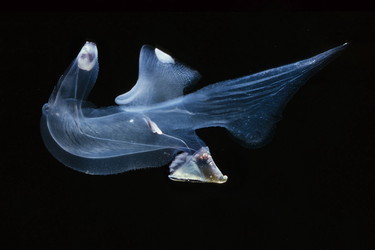

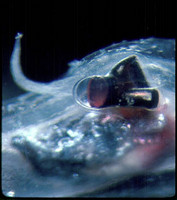
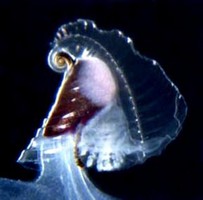
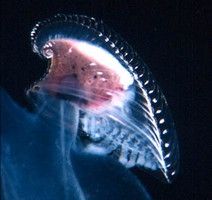
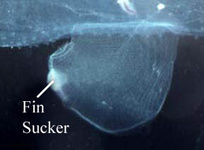



 Go to quick links
Go to quick search
Go to navigation for this section of the ToL site
Go to detailed links for the ToL site
Go to quick links
Go to quick search
Go to navigation for this section of the ToL site
Go to detailed links for the ToL site